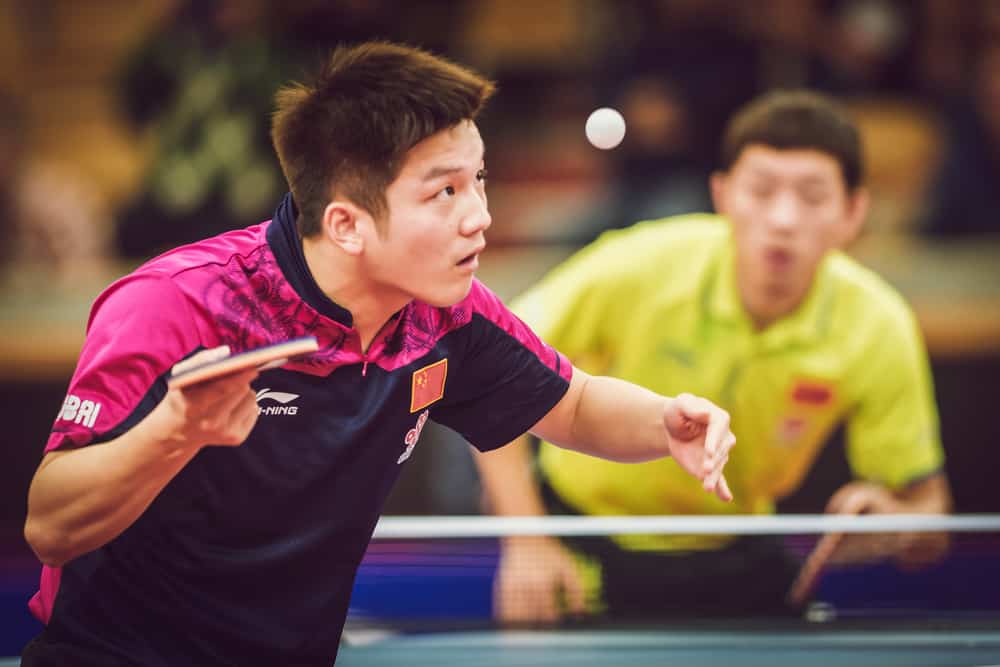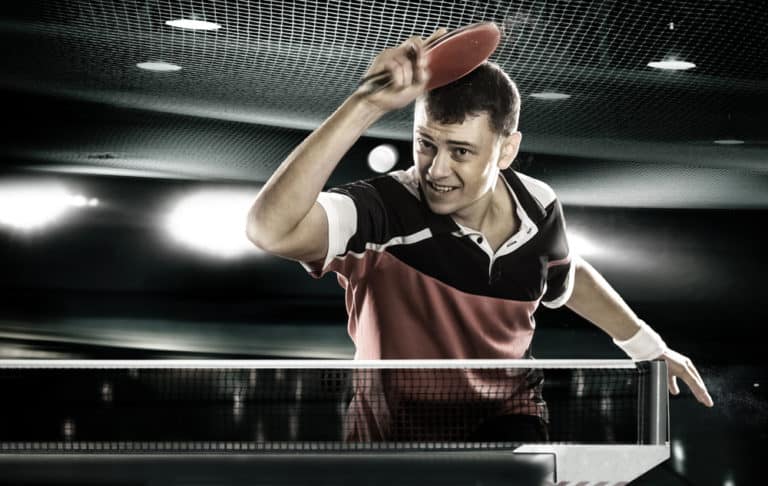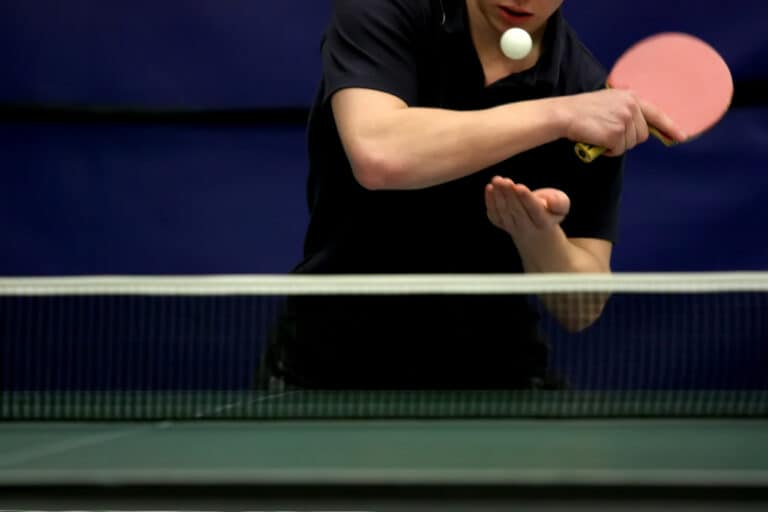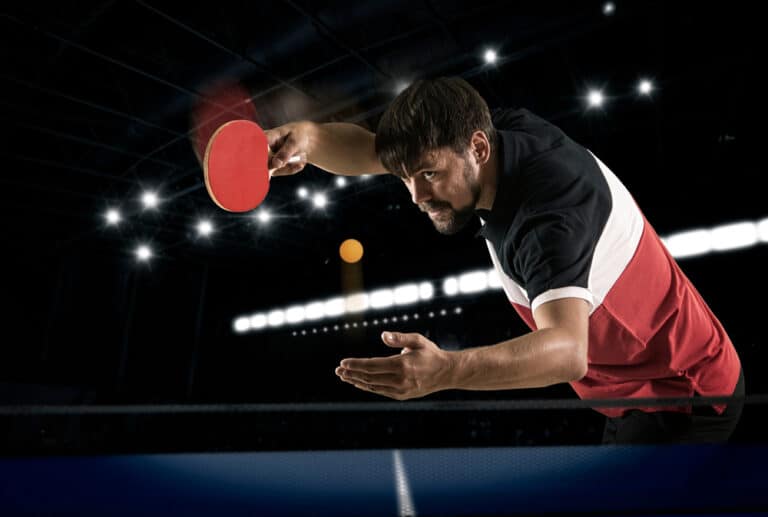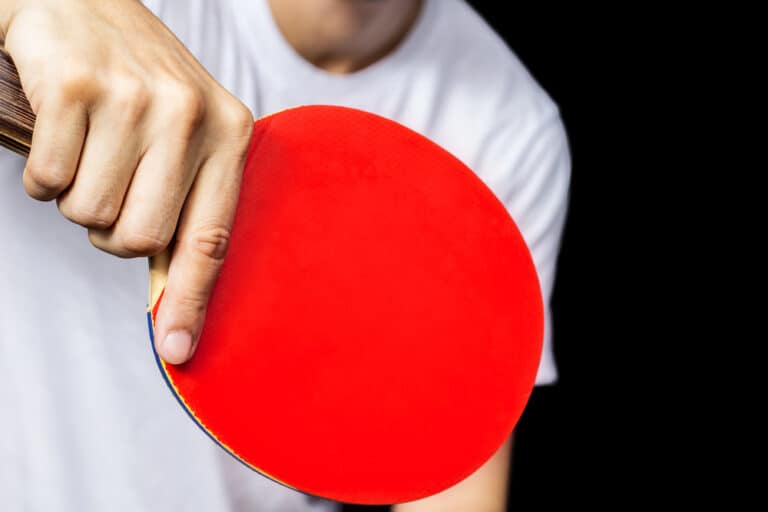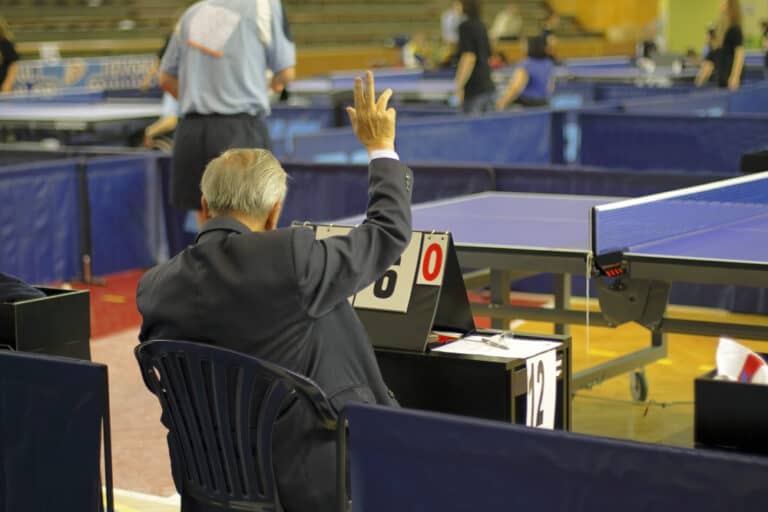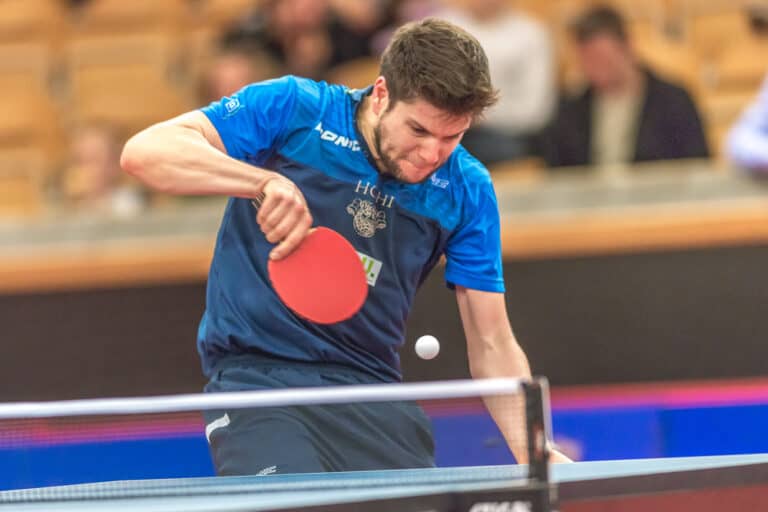How To Improve Topspin In Table Tennis
Performing topspin shots in table tennis is an essential skill every player should know how to do. A great topspin shot can mean the difference between a win and a loss, but practicing topspin is the only way to improve it. Luckily there are a few good ways to practice your topspin.
There are a few ways to improve your topspin in table tennis. The main ways include using the correct stroke, repeatedly practicing the shot, working on your topspin control, and practicing from varying positions. You can also use another rubber with more spin to help you get started.
Topspin is the most common spin used in table tennis, so you must know how to use it. Improving your topspin is essential, but knowing where to start can make it challenging. This article outlines and explains the benefits of some of the best ways to improve your topspin in table tennis. Whether you’re a beginner or a seasoned player looking to improve your topspin, we’ve got you covered.
Improving Your Topspin
The topspin shot is one of the first shots players learn in table tennis. It is typically learned first because when players hit the ball, the angle of their wrists on the stroke causes the racket to tilt forward slightly. When hitting the ball, the racket’s forward angle and the stroke’s movement causes players to brush the ball slightly and apply topspin.
Topspin shots are a vital technique when playing table tennis as it allows players to apply spin to the ball while keeping the speed they desire. Players can play faster shots with topspin than with other spins, as topspin causes the ball to curve down towards the table. The downward curve makes it easier to apply more force to topspin shots.
Improving your topspin in table tennis has advantages like improving the spin and speed of your topspin shots, better ball placement, and countering your opponent’s shots more efficiently.
The Correct Topspin Stroke
Perfecting your stroke and racket angles are the most important aspects of improving topspin. When you’re looking to improve your topspin shots, you’ll want to ensure you’re performing the stroke correctly. If your topspin stroke is wrong, it won’t be effective in generating topspin, and it might cost you points.
To perform a topspin shot, close your racket slightly. Closing your racket means angling it forward, so there is less perpendicular force. The idea behind topspin is to hit the ball, not directly behind but to brush slightly higher up with your racket. Brushing the ball makes it spin in the direction the racket is moving to create the spin.
Once you’ve closed your racket, wait for the ball to reach the highest point after it bounces and brush forward and upwards to create spin and hit it forward. Your arm should swing from your shoulder, and turning your hips should generate the force.
This technique applies to forehand and backhand topspin, though some differences exist. The forehand stroke requires you to bend your elbow and flick your wrist slightly to increase the spin you exert on the ball. Forehand shots also give the ball more speed because the size of the movement you can make and the momentum you can create is more significant.
Backhand topspin shots don’t have the same range of movement as forehand shots, which leads to a slightly lower backhand speed. Backhand topspin shots also use the elbow and the wrist, but instead of bending them, they are extended. In other words, instead of curling them towards your body, the elbow straightens out, and the wrist flicks away from the body.
For both forehand and backhand topspin shots, it’s essential to use the hips to generate force. Rotating the hips increases the speed at which the ball is hit because the movement starts before the swing. It allows you to generate some force without extending your arm, as extending it too early can cause you to over-extend when hitting the ball.
Topspin shots are sometimes called looping or loop drive shots. The point of looping is to generate heavy topspin on the ball. Loop driving is generating that heavy topspin while producing extra speed. Looping and loop driving are just different types of topspin techniques.
Looping involves the racket brushing the ball for longer than usual to generate more spin. The heavy spin causes it to dip or loop down to the table, hence the name. Loop driving is the same as looping, but the ball is hit with more force to increase the speed.
If done correctly, topspin, looping, and drive looping can cause the ball’s speed to increase after it bounces. The angle at which the ball is expected to travel after it bounces also changes. These results make topspin deadly and can catch your opponent off guard.
Repetition Is Key To Improving Topspin
Once you’ve gotten the hang of the topspin stroke, it’s time for repetition. Repetition is essential for improvement because it makes you more comfortable with an action or movement. In this case, the movement you want to get comfortable with is the topspin stroke. So find a buddy or a ball machine and practice the stroke until topspin shots become more manageable and you can consistently return the ball.
Focus on practicing your forehand or backhand stroke first. Focusing on one stroke will allow you to improve faster because it’s the only move your body is making. Your body will become comfortable with the movement, and your muscle memory will improve. Once you’re comfortable with the stroke and the shots are easier to perform, switch to the other side and do the same.
Improving Control With Topspin
Once you’ve got the hang on the topspin stroke and you’re able to land topspin shots on the table consistently, the next step is to improve your placement control. Control is as crucial in table tennis as speed and spin. Excellent control can help you to control rallies and execute finishing shots accurately.
Target practice is helpful when practicing control. Select a section of the table in which you wish the ball to land and practice landing topspin shots in that area. As you get better and your control increases, you can decrease the size of the area.
Topspin shots can be difficult to control well in fast-paced rallies, so having better control than your opponent could tip the scales in your favor. Some players might argue that control comes at the cost of speed and spin. But who said topspin shots have to have extreme speed?
If you’re practicing control using topspin, you’ll be able to place your shots on the table pretty accurately. A slightly slower, more controlled shot can force your opponent to return the ball in a way that creates an opportunity to strike. For example, forcing your opponent to dash to the left to return a tricky shot can leave them open for a speedy return to the right side.
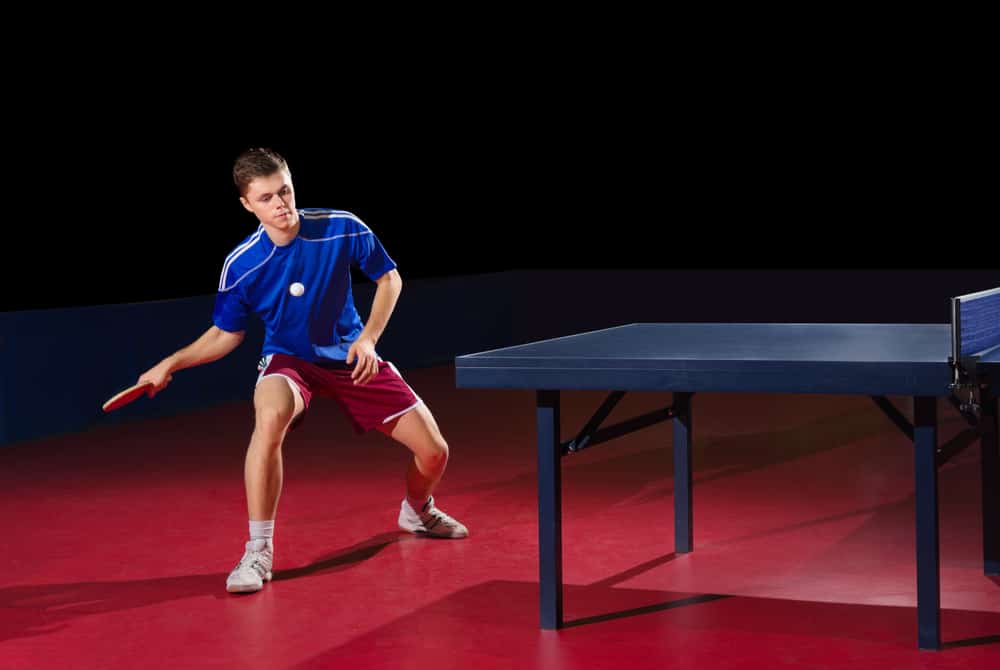
Practice Topspin From Difference Positions
Standing at the table and performing topspin shots is good practice, but what if you want to make a topspin shot from further away? Not only is controlling the ball’s placement a necessary skill but controlling the ball from different positions is also essential.
It won’t always be possible to perform a topspin shot right in front of the table, so it’s a good idea to practice returning shots from different positions. During rallies, players sometimes back away from the table because of the speed of the ball. Knowing how much topspin and power to use when standing further away can keep you in the game.
The obvious answer is more, but how much more? Practice topspin shots at varying distances from the table to get a feel for how much power and spin to use. Sometimes increasing the power can mean neglecting the topspin, and sometimes the topspin is what keeps the ball on the table.
Being further away from the table will mean opening the face of your racket and raising the angle of your swing to get the ball to travel the extra distance to the table.
Though if your opponent is also using topspin, the adjustment you’ll have to make is less. You won’t have to adjust your angles as much because the ball will naturally want to travel higher and further due to the opposing spin when it hits the racket.
How Do Speed and Spin Affect Topspin?
When improving topspin, you’ll want to know how different speeds and spins affect your topspin shots. Your return could fly way over the table or shoot downward into the net depending on the ball’s spin. The speed of the ball also plays a role in your topspin returns, as you might use too much power on a slow ball or too little power on a faster ball.
Returning backspin shots with topspin can cause the ball to move lower than intended and hit the net. This is because the ball is already spinning in the direction of your topspin. When you apply topspin to a ball that already has backspin, the spin increase makes the ball want to angle down sooner than it usually would. Typically, this is what causes it to hit the net.
To counter the lower travel of backspin balls with topspin, open the face of your racket slightly and swing at a steeper angle. Opening the face of the racket negates some of that downward force at the cost of some spin. But remember that the ball already has spin, so you don’t need to apply as much spin to achieve the desired result.
Raising the angle of your swing would usually make the ball travel higher. But because of the backspin, the ball will travel slightly lower and end up at the height you would expect from a topspin shot. So adjusting the angle of your racket and your swing may be necessary and will depend on the spin your opponent applies to the ball.
The way to return topspin shots is the opposite of backspin shots. The reason for this is that incoming topspin shots are spinning against the direction of your racket. When your racket hits the ball, it will travel higher than usual on the return because of the force applied to change the direction of its spin.
So to return a topspin shot with topspin, you’ll have to close your racket even further and lower the angle of your swing. The closed face of your racket will allow you to counter your opponent’s topspin and generate more of your own.
The spin causes the ball to want to move in the direction of your racket. If your swing angle is high, the ball will travel higher automatically because you are opening the face of your racket. Lowering the swing angle will negate the extra height of the ball caused by the counter-spin force. The sharper angles also give the ball more speed.
Practice Topspin With Different Rubber
When you’re looking at ways to help you improve your topspin, changing the rubber on your paddle may help. As you know, there are rubbers that aid players with speed, spin, and control. Replacing your racket’s rubber with a rubber better suited for spin can help you get the hang of topspin faster.
Practice with the spin rubber until you feel like you have gotten used to topspin shots and can control them. Once you are confident, replace the rubber with your usual one and practice with that. It may feel slightly different, but you’ll have the topspin stroke motion and the control, so it shouldn’t take long to get used to it.
You’ll need water-based glue to apply a new rubber to your racket. Apply it to your naked racket or blade, and carefully press on your chosen rubber. Once the glue has dried, cut the rubber to the shape of your racket, and voilà! Alternatively, suppose you don’t want to replace your racket’s rubber. In that case, you could buy the same racket and apply a high spin rubber for practice.
Conclusion
Topspin shots are one of the fundamentals every player must know in table tennis. Repetition is required to improve at anything, and topspin is no difference. Practicing the stroke for topspin shots on both your forehand and backhand will improve your muscle memory and make it easier to perform those shots.
Practice controlling where your topspin shots land and controlling them further from the table. Practicing with a rubber better suited to spin may help to increase the speed at which you improve. Practicing topspin shots against different types of spin is also essential to handle anything that comes your way.

